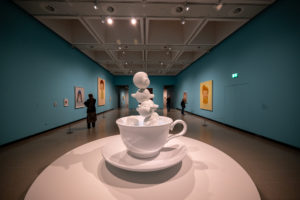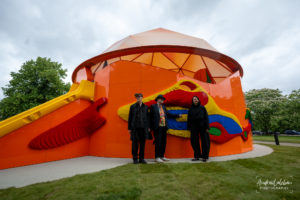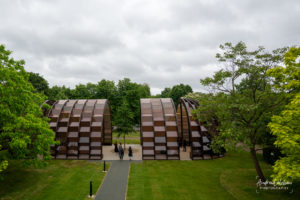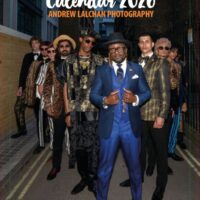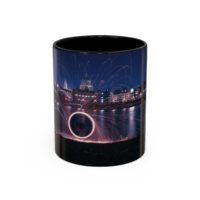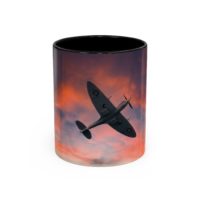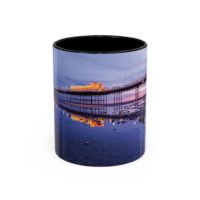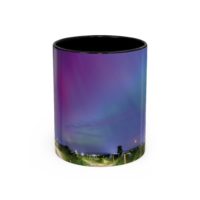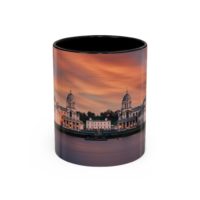Cornelia Parker is one of the most important contemporary artists working today. Her installations and sculptures are both powerful and memorable. This exhibition at Tate Britain showcases some of her best-known works and new pieces created especially for this show.
This was my first time seeing Parker’s work; she has a wide breadth of art covering immersive installations, sculptures, film, photography and drawing. The work is excellent and thought-provoking, making everyday objects into art successfully. My favourite room is the Perpetual Canon, with its flattened instruments and shadows.
This exhibition brings together almost 100 artworks across 35 years of her career. Parker is known for her immersive installations, which have become a cultural landscape feature. The exhibition runs until 16th October 2022.
Who is Cornelia Parker?
She is a British visual artist best known for her sculpture and installation art. Cornelia Parker was born in 1956 in Cheshire, UK. She first studied art at the Gloucester college of art and design. Later going on to Reading University, where she took a Masters in 1982. She currently lives and works in London.
In 1997 she was short-listed for the Turner Prize, and in 2002 she did her first solo exhibition at the Institute of Contemporary Art in Boston.
The Cornelia Parker exhibition is excellent, with areas filled with exploded sheds and contents. To a garden greenhouse covered in white brush strokes made out of Dover chalk. To the amazing hanging silver objects which are crushed. It is called thirty pieces of silver with reference to the bible. The Magna Carta is also embroidered straight out of Wikipedia, which took 250 people to make.
The exhibition is a retrospective of her work but with many new pieces. Especially with new films, and she delves into politics. I will go through the various rooms below, and you can see some of the photographs I took at the press preview.
Thirty Pieces of Silver
“Drawn to broken things, I decided it was time to give in to my destructive urges on an epic scale. I collected as much silver as I could find from car boot sales, markets and auctions.”
With reference to the bible, thirty pieces of silver were the amount of money that Judas received for betraying Jesus. Cornelia collected all these silver broken things; people even donated their wedding presents. She took all the pieces and one day crushed them with a steamroller; she called it robbing them of their 3rd dimension.
She put all the silver pieces together into thirty separate piles. Each piece was then suspended to hover a few inches above the ground.
Her inspiration came from the roadrunner’s cartoon deaths, a fond childhood memory. The piece is amazing and is a stunning start to the exhibition.
Small Sculptures, Avoided Objects and Textile Works
Pulverising, cutting and shooting objects to produce her work. These small objects are a glimpse into the rich materiality, processes and inventiveness of Parker.
“For the small objects, I wanted something that was more like a haiku or poem. These works might be just as labour intensive as the installations and describe something that was ‘not quite’ and object”
The room brings to light important themes in her work, especially around notions of violence. Figures from history are also constant themes, such as ‘Stolen Thunder’ or Inhaled Cliffs.
Cold Dark Matter, an Exploded View
This is one of her most prominent art pieces, and she is largely known for this. Amazingly a shed was blown up at the British Army School of Ammunition. They used Semtex to blow up the shed’s contents which contained various objects she had collected over some time. After the explosion, all the mangled objects were collected and then suspended on string showing the explosion in 3D. Parker said that the object lost its aura of death and appeared reanimated.
“We watch explosions daily, in action films, documentaries and on the news in never-ending reports of conflict. I wanted to create a real explosion, not a presentation. I chose the garden shed because it’s a place where you can store things you can’t quite throw away.”
Abstraction
The art pieces in this room tell a human story, referring to a particular incident or chance encounter. An escaped convict in Prison Wall Abstract, the poet William Blake in Black Path, or a battle between life and death in Poison and Antidote.
“If I could somehow plumb their depths, tap into their inner essence, I might find an unknown place, which by its very nature is abstract… both representational and abstract at the same time”
Perpetual Canon
This amazing room with flattened musical instruments creates shadows across the walls. The phrase perpetual canon comes from the musical term, which means a repeating phrase over and over again. Parker explains that the old instruments had experienced thousands of breaths circulating through them, and their last breath was squashed out.
A central light bulb casts the shadows around the walls, and the viewer’s shadows also create shadows that stand in for the absent players.
“I was invited to make a work for a circular space with a beautiful domed ceiling. I first thought of filling it with sound. This evolved into the idea of the mute marching band, frozen breathlessly in limbo.”
Films
Films have been part of Parker’s art since 2007, in which she engages in politics in many different ways. There are films about politics in the Middle East with ‘Made In Bethlehem’, ‘Chomskian Abstract’, ‘American Gothic’ and many more.
Another film that was created especially for the exhibition is called Flag 2022. It is six-minute long; it involves the creation of a Union Jack in reverse against the backdrop of the hymn Jerusalem.
War Room
At first, when you enter the room, it looks very red, but the closer you look, you see cut-out poppy holes. Over 300,000 holes are created when the poppies for remembrance day are punched out of the material. Parker had gone to the factory that made the poppies, got the leftover material, and then suspended them from the ceiling to make a tent. It is based on the peace summit with the French King in 1520 and Henry VIII where there was a tent called the Field of the Cloth of Gold.
Politics
Cornelia Parker’s commitment to politics and social justice is shown through her many works, be it her photography, sculpture, drawing and the act of collective embroidery. In the room is a thirteen-meter-long collectively hand-sewn embroidery to the Wikipedia page. The piece is called Magna Carta (an Embroidery). It is created by 200 volunteers, including public figures, human rights lawyers, politicians and prisoners.
“This is the time we all need to politically engage. We need art more than ever because it’s like the digestive system. a way of processing.”
Island
A hand-painted greenhouse stands in the centre of the room with a central light bulb. It’s called the Island, and each pane of glass is painted with white brush strokes of cliff chalk. The greenhouse becomes enclosed, inward-looking little England with a cliff face veil.
” When I was a child, we had a market garden and grew large quantities of tomatoes in greenhouses. We would whitewash the windows to protect them from the harsh summer sun.”
Parker says the inspiration for this piece ‘Island’ the island is our own, alienated from Europe in this time of Brexit and in these times of climate change and the crumbling coastlines. Things seem precarious.
The exhibition is curated by Andrea Schlieker, Director of exhibitions and displays at Tate Britain, with Nathan Ladd, an Assistant curator.
In the UK, you can catch this program on BBC Iplayer about Cornelia Parker, who Alan Yentob interviews. Alan talks to her about her creative process and delves into American history.
Getting there?
The easiest way is via Pimlico underground station, a 5 to 10min walk to Tate Britain, London. Cornelia Parker Tate Britain exhibition runs till 16th October 2022. Highly recommended if you are interested in contemporary art and one of Britain’s leading artists.
Photographs
Below are more photographs taken at the press preview, with further photos on the Flickr and Alamy links.
Thanks for reading; you can catch more of my photographs on the Flickr link below and purchase images on Alamy News Agency. Plus, sign up for my newsletter for events each month in London and the surrounding area just like this event.
Links
Cornelia Parker at Tate Britain
Alamy News Agency [Soon]

